You may love your cat, but the P.U. of litter box odor is something else entirely. The ammonia smell of cat urine is enough to make your own hair stand up at the back of your neck, and it would curl your tail if you had one. The poopy smell is something else entirely, and it’s not shy about giving you a one-two punch to the nostrils if you are anywhere in the vicinity. That stuff could be bottled and sold as a very effective personal protection spray. No one would want to mess with you if you were decked out in “Eau de Kitty Crap.” – it’s just that powerful. If you share your home with one or more felines, you need to check out this guide to how to get rid of smell in cat litter.
If you find the stank exuding from the litter box overpowering, think of how poor kitty feels. Their sense of smell is much more highly developed than ours, and they are quite fastidious about where they go to the bathroom. Staying on top of litter box odor means you are less likely to be dealing with cleaning up cat accidents in other parts of your house.
How to Get Rid of Smell in Cat Litter
1 Keep the Box Clean
If you are going to lay the smack down on smelly cat litter, you need to go after it where it lies. The problem may not be in the cat litter itself, but rather in the box. Regular cleaning with a mild dish detergent (unscented is best) and water or a bleach and water solution (one part bleach to 20 parts water) will help to keep it spic and span. Cleaning the box every week or every other week will make sure that you are adding the cat litter into a clean container.
2 Vinegar and Baking Soda Clean-up
Wash out your litter box with a mild detergent. Wipe it off with white vinegar and let it dry thoroughly. Put a layer of newspaper in the bottom of the box and shake some baking soda on top. Add your kitty litter on top, as usual. With this method, any smelly stuff will be absorbed by the newspaper instead of seeping through to the plastic of the litter box. You can also try placing a dish of vinegar next to the litter box to absorb kitty litter box odors.
3 Clumping Cat Litter Solution
Clumping cat litter is less likely to smell than the type that you are supposed to empty out at regular intervals. When it gets wet, it forms a ball around the liquid that is easy to identify. Simply scoop out the “deposit” your kitty has made (liquid and solid) daily. You will still need to give the litter box a through cleaning as well, but this product should do a good job of keeping the smell quotient to a minimum.
4 Keep the Litter Box Under Cover
You can give your cat some privacy when using the loo and contain the smell at the same time by purchasing a covered litter box. Your best bet is to introduce your pet to this type of box as a kitten. Large cats may find this style too confining, since they have to crawl through an opening every time they need to do their business. The disadvantage to this system is that it makes cleaning the container a bit more challenging. You will have to remove the lid every time you want to clean out the box, and it may be too high maintenance for some pet owners.
Prevent Cat Litter Smell Naturally
1 Offer High Quality Food
If you are holding your nose when your cat takes a dump, reconsider what you are offering as food. A store brand pet food may be cheaper, but that may have something to do with the amount of smell coming from the litter box. Switching to a better quality dry food can help to keep the stinkage down and keep your eyes from watering when you cat uses the box. You may need to test different foods before you find the right one for your cat, so don’t be discouraged if it takes some time to find one that the cat likes and doesn’t reek on the other side.
2 Limit the Moist Food in the Diet
Moist food is a treat that many kitties really enjoy, but it can be like all-you-can-eat beer and burrito nite at your favorite Mexican restaurant. It tastes great going down, but you (and everyone in your house) will be paying for it later. The higher level of moisture in the food tends to create looser, smellier stools for your cat, so offering it as an occasional treat rather than part of a steady diet can help to keep the aromas coming from the litter box down.
3 Water and Plenty of It
Encourage your cat to stay well hydrated and you will notice less stank coming from the litter box. If your kitty doesn’t seem interested in visiting the water bowl very often, you can make this more palatable by adding a small amount of chicken broth or tuna water to it. Put out several bowls in areas where your cats hang out, so that they have a supply available to them at all times. If the following solutions are insufficient in eliminating odor, it may be a sign that you need to visit you pet care credit.
[contact]
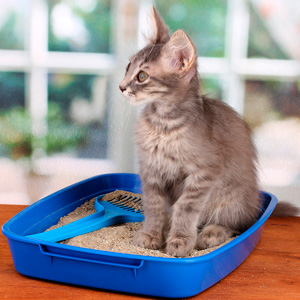

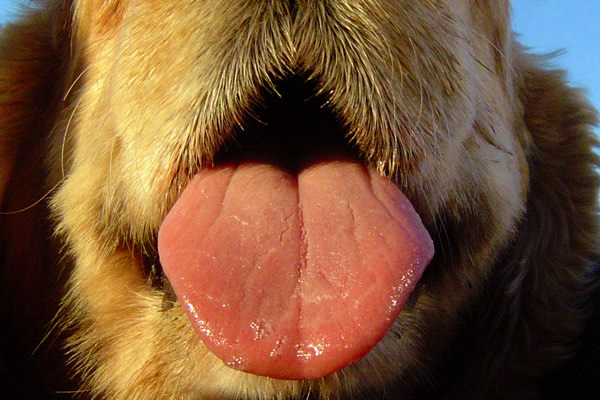

 Bad breath can be caused by a build-up of plaque and food debris between your dog’s teeth. Brush your dog’s teeth daily using a soft bristled brush and warm water. A spritz of lemon juice in the warm water will really help the cleaning process. It’s best to brush your dog’s teeth at the same time every day when your dog is generally relaxed so that the brushing procedure is calm and comforting.
Bad breath can be caused by a build-up of plaque and food debris between your dog’s teeth. Brush your dog’s teeth daily using a soft bristled brush and warm water. A spritz of lemon juice in the warm water will really help the cleaning process. It’s best to brush your dog’s teeth at the same time every day when your dog is generally relaxed so that the brushing procedure is calm and comforting.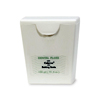 Twisted or braided rope toys can actually work like doggie dental floss between the teeth. Try sprinkling a bit beef or chicken broth on the toy to entice your dog to chew. Whenever you select dog chew toys, look for ones that will clean the surface of your dog’s teeth and exercise the gum area to cut down on smelly build up.
Twisted or braided rope toys can actually work like doggie dental floss between the teeth. Try sprinkling a bit beef or chicken broth on the toy to entice your dog to chew. Whenever you select dog chew toys, look for ones that will clean the surface of your dog’s teeth and exercise the gum area to cut down on smelly build up.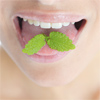
 Boil a few parsley stalks in water for about 5 minutes. Cool the water before giving it to your dog in their regular water bowl. Don’t forget to bring “parsley water” on trips to keep canine breath fresh.
Boil a few parsley stalks in water for about 5 minutes. Cool the water before giving it to your dog in their regular water bowl. Don’t forget to bring “parsley water” on trips to keep canine breath fresh. Carrots are a good healthy treat for your dog and help eliminate unpleasant doggie breath. Unlike meat chews, they are better for the teeth, are easily digested, and leave your dog’s mouth smelling clean. The other great thing about carrot snacks is that they are low calorie if you are conscious of your dog’s weight. Your pup will enjoy carrots as much as any dog treat. If your dog likes vegetables, celery is another great breath freshener. It is also low calorie, and easily digested.
Carrots are a good healthy treat for your dog and help eliminate unpleasant doggie breath. Unlike meat chews, they are better for the teeth, are easily digested, and leave your dog’s mouth smelling clean. The other great thing about carrot snacks is that they are low calorie if you are conscious of your dog’s weight. Your pup will enjoy carrots as much as any dog treat. If your dog likes vegetables, celery is another great breath freshener. It is also low calorie, and easily digested. Like humans, a dog’s good digestion keeps dogs from burping up strong food odors. Be sure your dog drinks plenty of water which aids in digestion. Also, drinking lots of water helps in another way. When your dog’s mouth is kept moist, the bacteria that can cause bad breath are less likely to thrive.
Like humans, a dog’s good digestion keeps dogs from burping up strong food odors. Be sure your dog drinks plenty of water which aids in digestion. Also, drinking lots of water helps in another way. When your dog’s mouth is kept moist, the bacteria that can cause bad breath are less likely to thrive.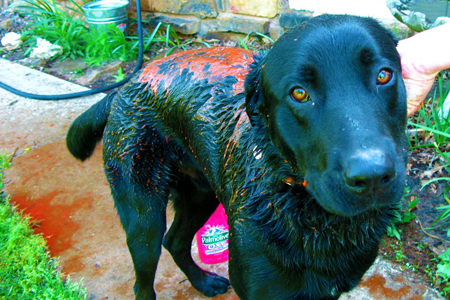

 It is important to treat your dog’s face immediately after the dog has been sprayed in the face with skunk oil. Although many dog owners leave the face for a secondary treatment, it is advisable to deodorize this area at the same time that you are de-skunking the rest of the dog.
It is important to treat your dog’s face immediately after the dog has been sprayed in the face with skunk oil. Although many dog owners leave the face for a secondary treatment, it is advisable to deodorize this area at the same time that you are de-skunking the rest of the dog. Tomato juice is an effective solution that will not have a negative effect upon contacting a dog’s face. Fill a bowl with tomato juice and proceed to dunk an old rag within this mixture. Once the rag is thoroughly soaked within tomato juice, proceed to carefully scrub down the dog’s face. While doing so, pay extra attention while scrubbing the fur around the dog’s eyes. Although it may not be harmful, it certainly will not be a pleasant experience for your dog if the mixture finds it’s way within the dog’s eye.
Tomato juice is an effective solution that will not have a negative effect upon contacting a dog’s face. Fill a bowl with tomato juice and proceed to dunk an old rag within this mixture. Once the rag is thoroughly soaked within tomato juice, proceed to carefully scrub down the dog’s face. While doing so, pay extra attention while scrubbing the fur around the dog’s eyes. Although it may not be harmful, it certainly will not be a pleasant experience for your dog if the mixture finds it’s way within the dog’s eye.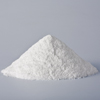 This household powder is another solution that will cause minimal irritation upon coming into contact with the dog’s eyes. Mix a paste of one part baking soda with three parts water and proceed to dip a old hand towel within the solution. Upon doing this, proceed to scrub the dog’s face lightly while paying extra attention to not to get the solution within the dog’s eyes. Allow this solution to settle in for 3-4 minutes before proceeding to wash the baking soda paste out of the dog’s fur.
This household powder is another solution that will cause minimal irritation upon coming into contact with the dog’s eyes. Mix a paste of one part baking soda with three parts water and proceed to dip a old hand towel within the solution. Upon doing this, proceed to scrub the dog’s face lightly while paying extra attention to not to get the solution within the dog’s eyes. Allow this solution to settle in for 3-4 minutes before proceeding to wash the baking soda paste out of the dog’s fur.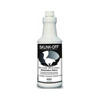 There exist a handful of de-skunking shampoos available for removing difficult odors from your dog’s face. Many of these solutions are
There exist a handful of de-skunking shampoos available for removing difficult odors from your dog’s face. Many of these solutions are 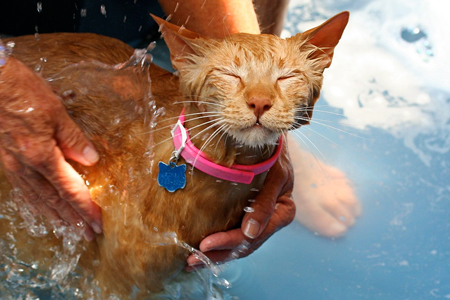

 Once your cat gets sprayed, you will need to first prepare yourself for it’s treatment. The smelly oil residues sprayed on your cat can easily rub off on your hands and clothes. With this in mind, you should immediately change into clothing that you do no care for and place on rubber gloves to protect your hands from the treatment.
Once your cat gets sprayed, you will need to first prepare yourself for it’s treatment. The smelly oil residues sprayed on your cat can easily rub off on your hands and clothes. With this in mind, you should immediately change into clothing that you do no care for and place on rubber gloves to protect your hands from the treatment. Once you have prepared yourself, you will need to proceed to quarantine your sprayed kitty within the bathroom. This will help to minimize the damage that a freshly sprayed cat can have when rubbing up against various areas of the home. If you can manage to contain your cat within the bath or shower this will work even better in minimizing the potential odorous damage that this can create.
Once you have prepared yourself, you will need to proceed to quarantine your sprayed kitty within the bathroom. This will help to minimize the damage that a freshly sprayed cat can have when rubbing up against various areas of the home. If you can manage to contain your cat within the bath or shower this will work even better in minimizing the potential odorous damage that this can create.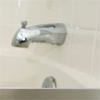 In order to prepare the cat for the bath, you will need to plug the drain and create a pool of water that is a minimum of 3-4 inches deep. Ideally, you will want the water reach close to your kitten’s chest. During this time, do your best to calm your cat to ensure that it does not panic within the water.
In order to prepare the cat for the bath, you will need to plug the drain and create a pool of water that is a minimum of 3-4 inches deep. Ideally, you will want the water reach close to your kitten’s chest. During this time, do your best to calm your cat to ensure that it does not panic within the water.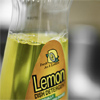 A household de-skunking solution can be made from simple ingredients that are found within most households. It is highly effective at breaking down and liquifying the skunk oil and working to absorb and cut through the odor. To create, you will need to produce a solution of 3% hydrogen peroxide, 1/4 cup of baking soda and one teaspoon of dish detergent. Dunk an old rags within the foamy substance and proceed to scrub down the cat’s fur and scrub away any skunk residues. Once the household solution has been applied to the entire cat, you can proceed to wash the solution away from the cat’s fur with the available water at the base of the tub. Take precaution to avoid getting this solution within the eyes of your cats.
A household de-skunking solution can be made from simple ingredients that are found within most households. It is highly effective at breaking down and liquifying the skunk oil and working to absorb and cut through the odor. To create, you will need to produce a solution of 3% hydrogen peroxide, 1/4 cup of baking soda and one teaspoon of dish detergent. Dunk an old rags within the foamy substance and proceed to scrub down the cat’s fur and scrub away any skunk residues. Once the household solution has been applied to the entire cat, you can proceed to wash the solution away from the cat’s fur with the available water at the base of the tub. Take precaution to avoid getting this solution within the eyes of your cats.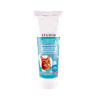 As a final solution, the use of cat shampoo can have a powerful effect in cutting through the skunky stench within your cat. Use
As a final solution, the use of cat shampoo can have a powerful effect in cutting through the skunky stench within your cat. Use 

 You will want to change the the wood chip bedding every 5-7 days. Build up of hamster waste and urine and water bottle related mildew can quickly lead to an unwanted hamster funk. Failure to change the wood chip bedding is often the most frequent cause of smells developing and can cause the entire room to smell.
You will want to change the the wood chip bedding every 5-7 days. Build up of hamster waste and urine and water bottle related mildew can quickly lead to an unwanted hamster funk. Failure to change the wood chip bedding is often the most frequent cause of smells developing and can cause the entire room to smell.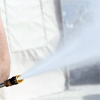 Although you may be changing the bedding on a weekly basis, odorous hamster residues can still build up within the cage, interior tub and toys. To solve this problem, you can give these areas of the cage a powerful spray outside with your garden hose on a monthly basis. Before beginning, you will want to remove your hamster, then proceed throw out the bedding, spray down all areas of the cage and proceed to allow the cage to naturally dry within the sun. The spray will have the effect of washing away much of the odorous bits and pieces while the sun will work to neutralize any unwelcome residues.
Although you may be changing the bedding on a weekly basis, odorous hamster residues can still build up within the cage, interior tub and toys. To solve this problem, you can give these areas of the cage a powerful spray outside with your garden hose on a monthly basis. Before beginning, you will want to remove your hamster, then proceed throw out the bedding, spray down all areas of the cage and proceed to allow the cage to naturally dry within the sun. The spray will have the effect of washing away much of the odorous bits and pieces while the sun will work to neutralize any unwelcome residues. 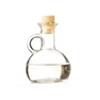 Simply spraying a cage is often insufficient in removing the odorous grime that accumulates throughout a cage. Using white vinegar will employ a powerful household acid to cut through any smelly residues to leave the cage smelling fresh. Mix a solution of white vinegar and water in equal parts within a bowl and proceed to dunk an old sponge within the formula. Proceed to scrub down all areas of the cage and spray all the residues away with the hose. Then finish placing the parts outside within direct sunlight to deodorize and dry off.
Simply spraying a cage is often insufficient in removing the odorous grime that accumulates throughout a cage. Using white vinegar will employ a powerful household acid to cut through any smelly residues to leave the cage smelling fresh. Mix a solution of white vinegar and water in equal parts within a bowl and proceed to dunk an old sponge within the formula. Proceed to scrub down all areas of the cage and spray all the residues away with the hose. Then finish placing the parts outside within direct sunlight to deodorize and dry off.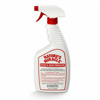 Though white vinegar is very effective, the use of an enzyme cleaning solution can have an even stronger impact. Pour enzyme cleaning solution within a bowl and dunk an old sponge within the product formula. Similarly, carry on with scrubbing down all areas of the cage, spraying residues off with a hose and placing the parts within the sun to dry out.
Though white vinegar is very effective, the use of an enzyme cleaning solution can have an even stronger impact. Pour enzyme cleaning solution within a bowl and dunk an old sponge within the product formula. Similarly, carry on with scrubbing down all areas of the cage, spraying residues off with a hose and placing the parts within the sun to dry out.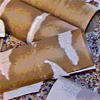 If smells still remain after performing the above steps, you can proceed to throw out all of the temporary toys that have become soiled within the cage. Often, these toys con within the form of old paper towel rolls and scraps of cardboard. These types of material are difficult to deodorize and are best thrown out.
If smells still remain after performing the above steps, you can proceed to throw out all of the temporary toys that have become soiled within the cage. Often, these toys con within the form of old paper towel rolls and scraps of cardboard. These types of material are difficult to deodorize and are best thrown out.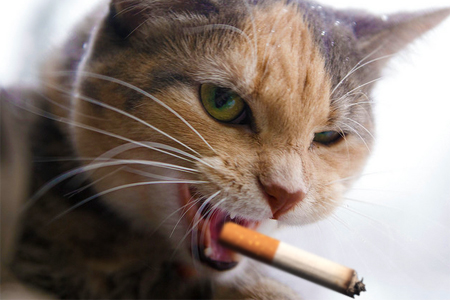

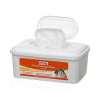 Bath wipes can be used to clean and deodorize a cat when bathing it within soapy water is out of the question. As an additional benefit, cats often prefer bath wipes because they feel as though they are receiving a massage during its application.
Bath wipes can be used to clean and deodorize a cat when bathing it within soapy water is out of the question. As an additional benefit, cats often prefer bath wipes because they feel as though they are receiving a massage during its application.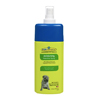 In addition to bath wipes, deodorizing cat product sprays can be helpful in neutralizing cigarette odors within a cat’s fur. These types of cleaning solutions are advantagious because they can deliver a deodorizing effect after only a few brief sprays. However, cats will almost always be adverse to direct sprays, so it may be a good idea to team up with a second person to hold the cat in place while you perform this function.
In addition to bath wipes, deodorizing cat product sprays can be helpful in neutralizing cigarette odors within a cat’s fur. These types of cleaning solutions are advantagious because they can deliver a deodorizing effect after only a few brief sprays. However, cats will almost always be adverse to direct sprays, so it may be a good idea to team up with a second person to hold the cat in place while you perform this function. 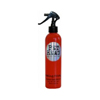 This product solution comes out as foam and can be worked within the cat’s fur with your hands. Initially, most cats will not feel the moisture and will not be adverse to the shampoo’s application. For best results, first spray the deodorizing foam within your hands rather than applying the foam directly on the cat. This will help to minimize any shock within the cat during the cleaning process.
This product solution comes out as foam and can be worked within the cat’s fur with your hands. Initially, most cats will not feel the moisture and will not be adverse to the shampoo’s application. For best results, first spray the deodorizing foam within your hands rather than applying the foam directly on the cat. This will help to minimize any shock within the cat during the cleaning process.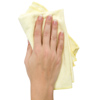 As a final solution, small quantities of baking soda can be used to absorb cigarette odors within your cat’s fur. Mix a solution of one part baking soda with eight parts water within a small bowl. Proceed to dip a cloth within this mixture and lightly apply it to your cat. It is important not to apply too much of this formula, as large amounts of baking soda can result in adverse health problems if indigested by your cat. As a rule of thumb, keep this solution as light as possible while applying it within your cat’s fur.
As a final solution, small quantities of baking soda can be used to absorb cigarette odors within your cat’s fur. Mix a solution of one part baking soda with eight parts water within a small bowl. Proceed to dip a cloth within this mixture and lightly apply it to your cat. It is important not to apply too much of this formula, as large amounts of baking soda can result in adverse health problems if indigested by your cat. As a rule of thumb, keep this solution as light as possible while applying it within your cat’s fur.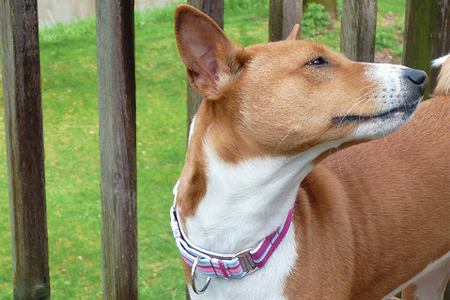

 Rotating collars is always a good practice. Doing this will ensure that your dog is always wearing a collar while another one is being cleaned and deodorized. This will keep your dog identifiable and make sure they never get lost. As well, this will also ensure that the odor will never build into a stink that will be impossible to remove. As soon as the fiber begins to smell, you will know that it is time to swap the collar and deodorize it.
Rotating collars is always a good practice. Doing this will ensure that your dog is always wearing a collar while another one is being cleaned and deodorized. This will keep your dog identifiable and make sure they never get lost. As well, this will also ensure that the odor will never build into a stink that will be impossible to remove. As soon as the fiber begins to smell, you will know that it is time to swap the collar and deodorize it. Once a mild smell has develop within your dog’s collar, you will know that it is time to hand wash the collar and lay within the sun. Apply a light detergent to the collar within the sink and scrub intensely. The objective it to draw out as much dog related oils from the fiber as possible. Once complete, squeeze out any remaining moisture and place the collar outside in direct sunlight until the remaining moisture has completely air dried away.
Once a mild smell has develop within your dog’s collar, you will know that it is time to hand wash the collar and lay within the sun. Apply a light detergent to the collar within the sink and scrub intensely. The objective it to draw out as much dog related oils from the fiber as possible. Once complete, squeeze out any remaining moisture and place the collar outside in direct sunlight until the remaining moisture has completely air dried away. For subtle dog scents within the collar, simply placing it through a washing machine cycle is enough to deodorize it and have it smelling fresh again. This solution can be combined with a normal household clothing wash to ensure that the collar does not bang around within the washer and dryer by itself.
For subtle dog scents within the collar, simply placing it through a washing machine cycle is enough to deodorize it and have it smelling fresh again. This solution can be combined with a normal household clothing wash to ensure that the collar does not bang around within the washer and dryer by itself. Although it may seem unconventional, many swear by the dishwasher’s effectiveness at eliminating difficult odors found within dog collars. The dog collar can be placed within a normal dish filled cycle that is set on the hottest setting. Upon completion the piping hot soapy rinse will have an impressive freshening effect. As a final step, the collar can be placed within the sun to dry out.
Although it may seem unconventional, many swear by the dishwasher’s effectiveness at eliminating difficult odors found within dog collars. The dog collar can be placed within a normal dish filled cycle that is set on the hottest setting. Upon completion the piping hot soapy rinse will have an impressive freshening effect. As a final step, the collar can be placed within the sun to dry out.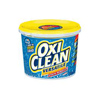 Soaking the dog collar within a bowl of enzyme cleaner or Oxiclean can do much to eliminate the most difficult odors from a dog collar. Allow the dog collar to soak in either of the solutions for 4-6 hours before removing it and placing it through washing machine cycle with your clothing. Upon completion, your dog’s collar will be smelling much fresher than it did before.
Soaking the dog collar within a bowl of enzyme cleaner or Oxiclean can do much to eliminate the most difficult odors from a dog collar. Allow the dog collar to soak in either of the solutions for 4-6 hours before removing it and placing it through washing machine cycle with your clothing. Upon completion, your dog’s collar will be smelling much fresher than it did before.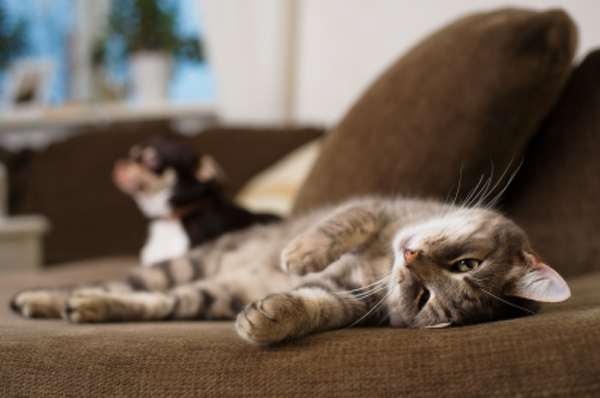

 The use of the party drink to combat odors has been in practice for several generations. Pour vodka within a generic spray bottle and proceed to mist down the entire affected area of the couch. The alcohol has the unique capability of neutralizing smelly residues on contact and proceeding to evaporate odorously away within 30-45 minutes.
The use of the party drink to combat odors has been in practice for several generations. Pour vodka within a generic spray bottle and proceed to mist down the entire affected area of the couch. The alcohol has the unique capability of neutralizing smelly residues on contact and proceeding to evaporate odorously away within 30-45 minutes.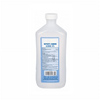 This solution works within a similar way as vodka by utilizing alcohol to neutralize odorous residues on the spot. Mix a solution of one part rubbing alcohol with five parts water and proceed to spray down the affected area of the couch. Allow 3-4 hours for the solution to evaporate away.
This solution works within a similar way as vodka by utilizing alcohol to neutralize odorous residues on the spot. Mix a solution of one part rubbing alcohol with five parts water and proceed to spray down the affected area of the couch. Allow 3-4 hours for the solution to evaporate away. This solution harnesses the power citric acid has in cutting through difficult odors. Mix a solution of one part lemon juice with eight parts water within a spray bottle and mist down all cat affected areas within the couch. Open the windows and provide 2-3 hours for the mixture to evaporate before putting the couch back into use.
This solution harnesses the power citric acid has in cutting through difficult odors. Mix a solution of one part lemon juice with eight parts water within a spray bottle and mist down all cat affected areas within the couch. Open the windows and provide 2-3 hours for the mixture to evaporate before putting the couch back into use.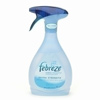 There are several household deodorizing sprays that can be effective for mild cat related odors within the couch. Products like Febreze and Glade can work to cover and neutralize mild feline odors within the couch. Simply spray down the affected area and provide approximately 30-60 minutes for the product solution to evaporate away.
There are several household deodorizing sprays that can be effective for mild cat related odors within the couch. Products like Febreze and Glade can work to cover and neutralize mild feline odors within the couch. Simply spray down the affected area and provide approximately 30-60 minutes for the product solution to evaporate away.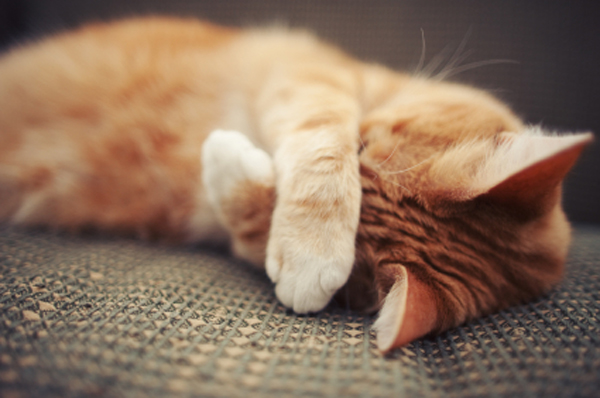
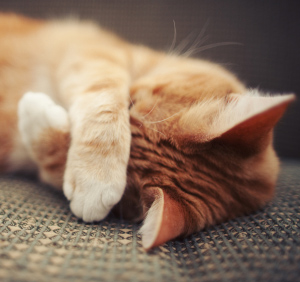
 If you have caught your kitten within the act on one of the cushions from your couch or sofa, gentility remove the cushion to place it outside as soon as possible. Cat urine has a way of making it’s way within the cracks of the couch and underlying furniture frames if it has enough time to soak in. By immediately removing the cushion, you will be preventing this from happening and diverting a larger problem.
If you have caught your kitten within the act on one of the cushions from your couch or sofa, gentility remove the cushion to place it outside as soon as possible. Cat urine has a way of making it’s way within the cracks of the couch and underlying furniture frames if it has enough time to soak in. By immediately removing the cushion, you will be preventing this from happening and diverting a larger problem. If the smell of cat urine is within a piece of your furniture, it is likely that it has taken a direct hit. In such cases, you can use a blacklight to search out the spot. Close the blinds within the room, and run a black light over the affected piece of furniture. Immediately, you should be able to see a subtile grow emanating from that areas where your cat has urinated on the furniture.
If the smell of cat urine is within a piece of your furniture, it is likely that it has taken a direct hit. In such cases, you can use a blacklight to search out the spot. Close the blinds within the room, and run a black light over the affected piece of furniture. Immediately, you should be able to see a subtile grow emanating from that areas where your cat has urinated on the furniture. Once much of the urine has been lifted from the location, you can proceed to pour small amounts of water onto the affected portions of the furniture to dilute the remaining residues within. After pouring water onto the upholstery and underlying furniture padding, you can proceed to blot dry the location to pull out additional urine resides from the cushioning. For best results, pour water and blot dry a second time to lift additional urine fluids out of the furniture.
Once much of the urine has been lifted from the location, you can proceed to pour small amounts of water onto the affected portions of the furniture to dilute the remaining residues within. After pouring water onto the upholstery and underlying furniture padding, you can proceed to blot dry the location to pull out additional urine resides from the cushioning. For best results, pour water and blot dry a second time to lift additional urine fluids out of the furniture.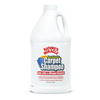 Once much of the urine and ammonia based residues have been lifted from the furniture, using enzyme cleaner will help to eat through the existing residues and deodorizing the urine odor. Pour enzyme cleaning solution over the affected areas and allow for the solution to set for 24-48 hours while it literally eats through the organic urine residues within the upholstery and underlying padding. Once 1-2 days have passed, you can return to blot dry the enzyme cleaning solution from the furniture before placing back within use.
Once much of the urine and ammonia based residues have been lifted from the furniture, using enzyme cleaner will help to eat through the existing residues and deodorizing the urine odor. Pour enzyme cleaning solution over the affected areas and allow for the solution to set for 24-48 hours while it literally eats through the organic urine residues within the upholstery and underlying padding. Once 1-2 days have passed, you can return to blot dry the enzyme cleaning solution from the furniture before placing back within use. Cats are creatures of comfort and often will opt to relieve their bladders in places that are close and comfortable. If the cat litter box is located on the other end of the house, you may wish to consider placing another litter box on the other corner of the household. Doing will ensure that you cat is always within close proximity to the litter box and will have no excuse not to use it. As an additional precaution, avoid placing that the box within a location that can accidentally be blocked off by a door or obstruction. If cats cannot get to their litter box, you can be sure that they will relieve themselves elsewhere.
Cats are creatures of comfort and often will opt to relieve their bladders in places that are close and comfortable. If the cat litter box is located on the other end of the house, you may wish to consider placing another litter box on the other corner of the household. Doing will ensure that you cat is always within close proximity to the litter box and will have no excuse not to use it. As an additional precaution, avoid placing that the box within a location that can accidentally be blocked off by a door or obstruction. If cats cannot get to their litter box, you can be sure that they will relieve themselves elsewhere. Rewards always work better than punishments. If your cat successfully uses his litter box, be sure to provide rewards from time to time to increase it’s positive association with the act. This is especially important after the cat has misfired on you furniture as this will incentives this practice and will ensure that your cat does not get within the habit of peeing anywhere that he pleases within the house. If this problem persists, it may make sense to take you cat to the
Rewards always work better than punishments. If your cat successfully uses his litter box, be sure to provide rewards from time to time to increase it’s positive association with the act. This is especially important after the cat has misfired on you furniture as this will incentives this practice and will ensure that your cat does not get within the habit of peeing anywhere that he pleases within the house. If this problem persists, it may make sense to take you cat to the 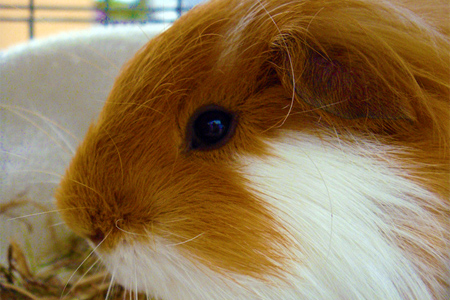

 It is important to select an area within your home that it not connected to your main living space. It is ideal if this location received some natural light and has close proximity to window that can be opened to provide fresh circulation. Mud rooms exist within many homes, and provide the perfect space for the placement of your pet’s cage.
It is important to select an area within your home that it not connected to your main living space. It is ideal if this location received some natural light and has close proximity to window that can be opened to provide fresh circulation. Mud rooms exist within many homes, and provide the perfect space for the placement of your pet’s cage.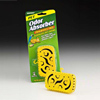
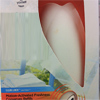 When all else fails, you can plug in an air freshener within the same room as the pet’s cage. This will help to cover and mask any pet related odors that may develop between bedding changes and cage cleanings. As an added benefit, the room in which you run this freshener will have a pleasant and stimulation scent of your choosing.
When all else fails, you can plug in an air freshener within the same room as the pet’s cage. This will help to cover and mask any pet related odors that may develop between bedding changes and cage cleanings. As an added benefit, the room in which you run this freshener will have a pleasant and stimulation scent of your choosing.